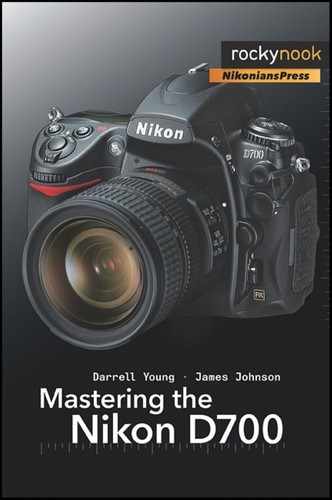I grew up looking at pictures.
Ever since I was a baby my mother took hundreds of photographs of our family life, capturing small pieces of time frozen in little negative squares. Today, I can still look back at those images and they awaken memories that would otherwise be forgotten.
In 1968, my dear Mom gave me my first Brownie Hawkeye camera, and that little camera ignited a fire in me for taking pictures. I remember my mother’s words of instruction, “Load the film in a dark place, never open the film door until after you rewind, and keep the sun behind you when you shoot”.
From that day forward I often carried a camera with me. I took the fuzzy pictures of a 13-year-old as I hiked up the Roosevelt Mountain in Rockwood, Tennessee, USA, with my brother Steven and a friend named Scott. Every major event of my life has a few frames attached.
As an adult, I began photographing my own family, and to this day I’ve been documenting the growth of my five children. From my earliest memories, photography has been a part of my life, and I’ll keep on shooting as long as I am able.
The year 1980 was a milestone for me; that’s when I got my first Nikon camera. It was a nearly new Nikon FM, and I reveled in its incredible build, and the unbelievable images it produced. Before then, I had been shooting with Kodak 110 and 126 cameras, and although those images have priceless personal value, they would win no contests. I graduated from negatives to transparencies in 1981, as I realized that even sharper and less grainy images could be created in those delightful little two-inch squares. I loved film, and shot a lot of it. I wanted to shoot even more, but the cost of raising kids took precedence over the cost of film and processing.
The year 2002 changed everything for me photographically. I had been playing around with a Kodak P&S digital camera, and I finally got a Nikon Coolpix 990. While the pictures were fun and easy to make, they did not equal the quality of my 35mm images, so I viewed digital photography only as a toy. Then Nikon released the six-MP D100, and Digital Darrell was born. Never before had I shot so many images. With the “free” use of the camera, I took thousands of photographs that I would never have considered taking with expensive film, and thus I moved to a new level of photography in the process. Digital cameras can offer an educational course in photography within themselves.
My love of digital photography grew, as did my relationship with the world’s premier Nikon User Community, www.Nikonians.org. I came on board as a charter member in late 2000, and after my D100 arrived I really become involved as a member. I wrote a camera review that J. Ramón Palacios liked, (JRP is one of the co-owners of the Nikonians.org website, along with Bo Stahlbrandt) and he asked me if I’d like to write a few articles for Nikonians.org. At that time, I didn’t even know I was a writer! Thank you, JRP!
I practically lived on Nikonians.org, spending hours there each day, first as a moderator, then as founding member of the Nikonian Writer’s Guild. JRP asked me to write as often as I could, and he posted my articles for others to read. Wow, did my ego swell!
In 2005, I bought yet another of Nikon’s excellent workhorse cameras—the D200. This camera seemed to reflect a direction toward a truly professional build in a smaller bodied camera. It has a high, 10 MP resolution, a weather-sealed frame, and a flexible feature set that includes the ability to fully use Non-CPU lenses, such as Nikkor AI and AI-S primes. I used this camera on an almost daily basis, as a “carry” camera, since the size was reasonable and the image quality outstanding. Generation Two!
Then in 2007 my photographic world was tremendously enriched. Nikon released a camera that made my eyes pop, and my Nikon Acquisition Syndrome (NAS) become overwhelming. The Nikon D300! This is third-generation 12 MP digital photography! This is the affordable, yet professional-level tool for passionate creativity!
I opened that user’s manual of 421 pages and read some of it. “Wow, what a complex camera”, I thought. I struggled to understand how the autofocus and other systems worked. All these modes, and banks, and custom settings! Over the next few weeks, as I learned this new and extremely powerful camera inside and out, I began writing chapters of the Mastering the Nikon D300 book, partially to teach myself how to use the complex and very flexible features of the D300, and also to help readers master their new D300. Now, we’re doing it again for the Nikon D700.
Additional help is available to you at the world’s premier Nikon User’s Community, Nikonians.org. This truly is an International Community of over 170,000 Nikon users. Talk about a Nikon resource! As a Nikon user, you are probably already a member, but if you are not, please log on to www.Nikonians.org and become at least a Silver member. Nikonians.org is a gold mine of photographic knowledge for Nikon users and is unmatched by any other resource available.
This book is a joint effort to offer a resource to you that will help you understand the complexities of the important, most-used features of Nikon’s latest “wonder camera”. It’s also designed to help you have some fun with your D700.
I feel greatly privileged to be a Nikonian, to have such knowledgeable and friendly associates, and to help provide yet another, much requested resource in the form of a printed book. I hope you enjoy this book and that you greatly benefit from it, and most of all that you find joy in using your chosen photographic tool ... the Nikon D700.
Keep on capturing time ...
Digital Darrell
(Darrell Young)
